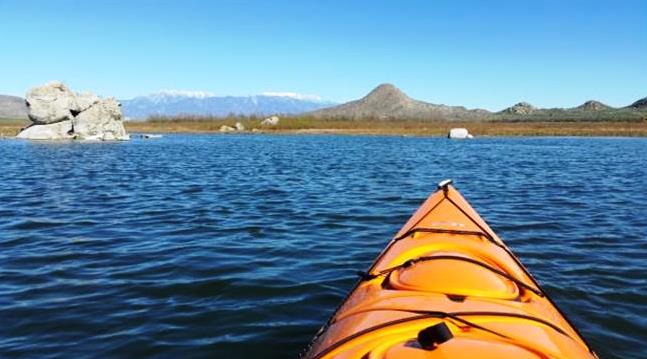Algal bloom strikes Lake Perris
Department of Water Resources declares the local waterway as dangerous; boating, however, is still permitted.
LAKE PERRIS—California’s Department of Water Resources (DWR) issued an advisory on May 17, urging anyone who visits Lake Perris to avoid physical contact with the water and to not eat any fish sourced from the Riverside County waterway. Lake Perris, according to DWR officials, is experiencing a bout with blue-green algae (or algal bloom).
The only permitted activity on the waterway is boating; the lake’s visitors are advised not to swim or participate in other sporting activities on the water.
Restrictions are specifically in place at Lake Perris’ Moreno Beach. Anyone who comes in physical contact in the water could suffer from adverse health effects, according to DWR staff.
“Danger signs are posted at Moreno Beach. Keep pets away from water. At Perris Beach, which has a caution advisory, swimming is allowed and public should also avoid contact with algae and eating fish,” DWR staff said in a released statement.
Coming into contact to blue-green algae could result in any number of physical anomalies, DWR staff explained.
“The recommendation is based on the potential health risks from algal toxins. Exposure to toxic blue-green algae, also known as cyanobacteria, can cause eye irritation, allergic skin rash, mouth ulcers, vomiting, diarrhea, and cold- and flu-like symptoms,” DWR staff stated. “Pets can be especially susceptible because they tend to drink while in the water and lick their fur afterwards.”
Wind conditions and wave activity could cause the algal bloom situation to shift suddenly, meaning the concentration of blue-green algae could move to another segment of the reservoir. Algal bloom can take many forms – foam along the shoreline, mats or scum – and be blue, brow, green or white in color.
Do not allow pets or livestock to drink or lick their fur after contact with the water. Avoid swimming, wading or jet/water skiing in water where you see algae bloom, scum or mats. Fish or shellfish from the affected water should not be consumed. Anyone who believes they have come in contact with blue-green algae toxins should immediately seek medical treatment.
Blue-green algae toxins cannot be removed from the water via filters, tablets or boiling.


